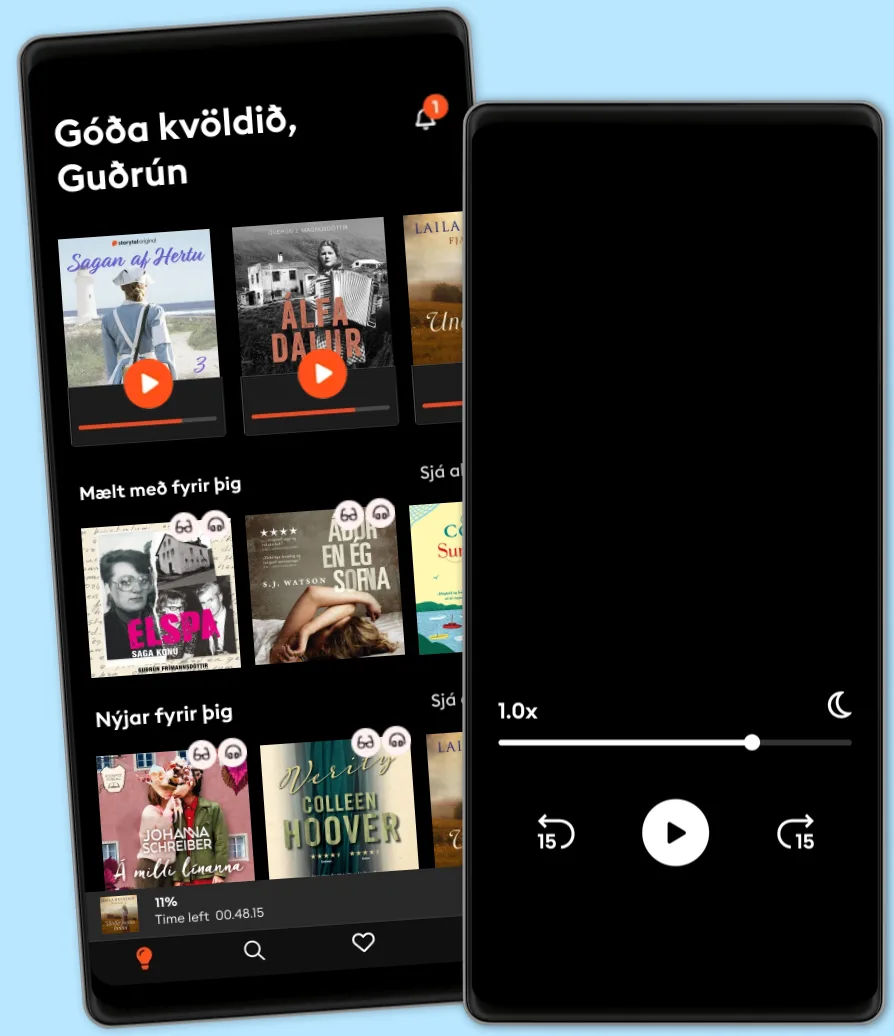Hlustaðu og lestu
Stígðu inn í heim af óteljandi sögum
- Lestu og hlustaðu eins mikið og þú vilt
- Þúsundir titla
- Getur sagt upp hvenær sem er
- Engin skuldbinding

Rover's Rebirth: The Post War Renaissance 1945-1953
- Höfundur
- Útgefandi
- Tungumál
- enska
- Format
- Flokkur
Óskáldað efni
Like other British motor manufacturers, the Rover Company spent World War II helping the war effort rather than building cars. Bombed out of its original home in Coventry during the Blitz in 1940, it was fortunate in 1945 to be able to move into the new factory at Solihull that it had been managing on behalf of the Air Ministry. The Solihull factory was not only new: it was huge. Its size presented Rover with a welcome opportunity for expansion, but first the company had to get back into the game. With no new car designs ready, Rover's only option was to re-start production with mildly improved versions of their pre-war models. New models were a long time coming. Early ideas focused on a small economy car, but it soon became clear that this was not what the public wanted. Meanwhile, ambitious plans for a new and ultra-modern car, using mechanical elements that had been under development before the war, had to be put back when there were delays in designing a satisfactory modern body style. As a temporary measure, Rover added their new mechanical elements to modified pre-war style bodies to deliver the P3 models in 1948. The solution was unexpected. Rover's Chief Engineer had bought a war-surplus Jeep for his own use, and he quickly realised that Rover could easily build something similar that civilian users both at home and abroad would find useful. Combining their new engine with the simplest of chassis and body to save time and costs, Rover had the Land-Rover ready shortly after the new P3 – and its immediate world-wide success took them by surprise. It had plans, too – far too many to put into production. There were gas turbine-powered cars inspired by the company's wartime jet engine work; there was a hybrid of Rover car and Land-Rover called the Road-Rover; and there were ideas for expanding the existing model ranges and adding more. By 1953, when the story told in this book ends, Rover was ready to introduce new saloons and Land-Rovers that would see it comfortably through the 1950s. Not only had it survived, but it was in better health than ever before.
© 2024 The Crowood Press (Rafbók): 9780719844133
Útgáfudagur
Rafbók: 21 augusti 2024
- Hjartabein Colleen Hoover
4.3
- Lofaðu mér því Jill Mansell
4.1
- Ég ætla að djamma þar til ég drepst Ívar Örn Katrínarson
4.4
- Blóraböggull Sofie Sarenbrant
4.3
- Raddir myrkurs Kolbrún Valbergsdóttir
3.7
- Fjendur Torill Thorup
4.3
- Sagan af Hertu 5 Anna Sundbeck Klav
4.5
- Lára missir tönn Birgitta Haukdal
4.6
- Undir óskasólu Birgitta H. Halldórsdóttir
4.3
- Bróðir minn í 75 pörtum Sebastian Richelsen
4.2
- Dauðinn einn var vitni Stefán Máni
4.4
- Hvergi örugg Patricia Gibney
4.3
- Ekki er allt sem sýnist Stefan Ahnhem
4.2
- Áttunda undur veraldar Lilja Rós Agnarsdóttir
4.3
- Morðin á Heimavistinni Lucinda Riley
4.4
Veldu áskrift
Yfir 900.000 hljóð- og rafbækur
Yfir 400 titlar frá Storytel Original
Barnvænt viðmót með Kids Mode
Vistaðu bækurnar fyrir ferðalögin
Unlimited
Besti valkosturinn fyrir einn notanda
1 aðgangur
Ótakmörkuð hlustun
Yfir 900.000 hljóð- og rafbækur
Engin skuldbinding
Getur sagt upp hvenær sem er
Family
Fyrir þau sem vilja deila sögum með fjölskyldu og vinum.
2-6 aðgangar
100 klst/mán fyrir hvern aðgang
Yfir 900.000 hljóð- og rafbækur
Engin skuldbinding
Getur sagt upp hvenær sem er
2 aðgangar
3990 kr /á mánuðiÍslenska
Ísland